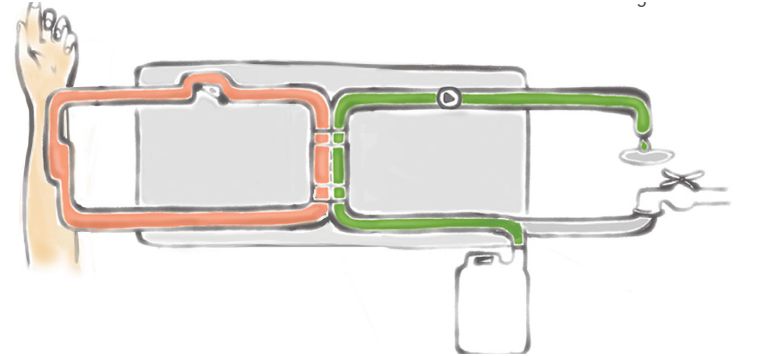How does dialysis work?
Dialysis removes waste and fluids from your body that your kidneys are not able to remove. Dialysis also aims to keep your body in balance by correcting the levels of various toxic substances in your blood. Without dialysis, all patients with complete kidney failure would die from the build up of toxins in the bloodstream.
Principles of dialysis
There are two main types of dialysis: haemodialysis and peritoneal dialysis. Whichever treatment is chosen, the aims of dialysis are very similar: dialysis is designed to replace several functions of the kidney. The therapy must: remove waste products, remove excess fluid and balance the amount of chemicals (electrolytes) and other substances in your body. Effective dialysis requires: a semipermeable membrane, blood supply, dialysis fluid and a method of removing excess fluid.
.
Semipermeable membrane
In dialysis a semipermeable membrane separates the blood from the dialysis fluid. This membrane allows some substances to pass through, but not others. It allows waste products, water, electrolytes and other substances to be removed from the blood into the dialysis fluid (and sometimes in the other direction) by a process called diffusion. The movement of waste products and other substances is dependent on the membrane’s permeability, the size and structure of the various substances, the dialysis fluid makeup, and the blood supply to the membrane.
Blood supply
The better the blood supply to the membrane the more efficient the dialysis treatment. In haemodialysis blood supply can be controlled by the dialysis machine.
Dialysis fluid
In both dialysis modes the dialysis fluid enables waste products to be removed from the blood. In addition to this, it contains a range of substances which help to correct imbalances that occur as a result of kidney failure.
Fluid removal
Fluid removal is achieved by very different processes in haemodialysis versus peritoneal dialysis. In haemodialysis the dialysis machine uses pressure to pull fluid across the membrane from the blood and into the dialysis fluid. In peritoneal dialysis glucose is used in the dialysis fluid. This has the effect of encouraging excess fluid to move out of the blood and into the dialysis fluid to be periodically drained.
Aim of dialysis
Whichever dialysis treatment is used the aim is to: remove waste products, remove excess fluid, correct electrolyte imbalances and to correct the pH of the body.

